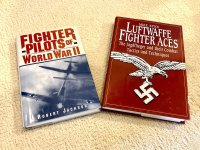I finished the series last night and thought it was excellent. I would strongly recommend it. One thing has bothered me though from the first combat scenes.
How did all the gunners on the B-17’s keep from having friendly fire accidents when attacked by German fighters? Those B-17’s flew in close formations—I have seen that from historical photographs, news-reels, etc., not just the movie—and the German fighters would be flying in to attack in every direction under the sun. How did our own boys keep from hitting other Fortresses flying in formation when feverishly trying to shoot down the German fighters?
How did all the gunners on the B-17’s keep from having friendly fire accidents when attacked by German fighters? Those B-17’s flew in close formations—I have seen that from historical photographs, news-reels, etc., not just the movie—and the German fighters would be flying in to attack in every direction under the sun. How did our own boys keep from hitting other Fortresses flying in formation when feverishly trying to shoot down the German fighters?



